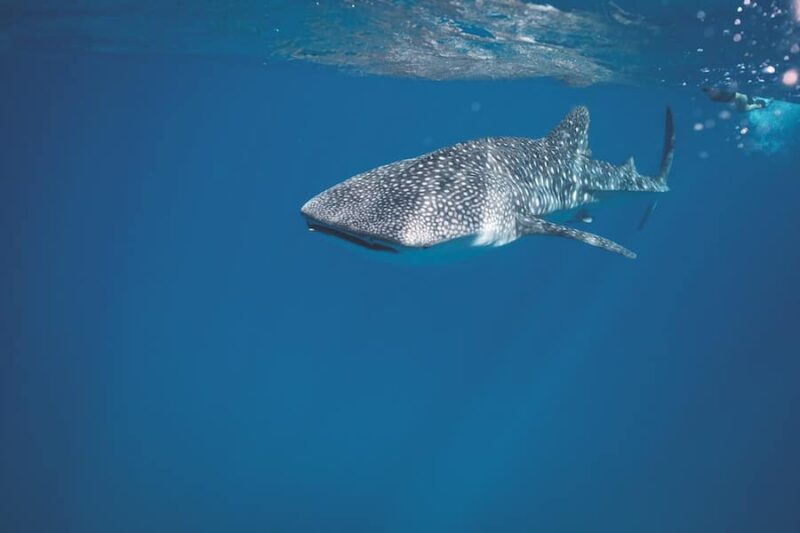When it comes to sharks, one species that often sparks curiosity and concern is the bull shark (Carcharhinus leucas). Known for its adaptability and ability to thrive in both saltwater and freshwater environments, the bull shark has gained a reputation as one of the more aggressive shark species. In this article, we will delve into the question, “Are bull sharks dangerous?” and explore the fascinating world of these creatures to provide you with a comprehensive understanding of their behavior, interactions with humans, and the factors contributing to their potential threat.
Are Bull Sharks Dangerous?
Yes, bull sharks can be dangerous. Bull sharks are known for their aggressive behavior and adaptability to various aquatic habitats. They can survive in saltwater and freshwater environments, including rivers and estuaries. Bull sharks are territorial and have been involved in unprovoked attacks. Their powerful physique and sharp teeth contribute to their potential danger. Although the overall risk of encountering a bull shark is relatively low, caution should be exercised when swimming or engaging in water activities in areas where bull sharks inhabit.
Understanding Bull Shark Behavior And Characteristics
Bull sharks (Carcharhinus leucas) are fascinating creatures that exhibit unique behaviors and possess distinct characteristics. To better comprehend their behavior, it is crucial to delve into their natural instincts and adaptations.
One notable aspect of bull shark behavior is their aggressiveness. They are known for being one of the most aggressive shark species, often displaying territorial tendencies. Bull sharks fiercely protect their preferred habitats, including coastal waters, estuaries, and even rivers. This territorial nature can lead to confrontations with humans when they enter these shared spaces.
What sets bull sharks apart from other species is their exceptional ability to thrive in both saltwater and freshwater environments. Unlike most sharks, bull sharks possess a specialized gland that allows them to osmoregulate, meaning they can maintain a stable internal saltwater balance. This adaptation enables them to venture far upriver into freshwater systems, sometimes even hundreds of miles inland. Their adaptability and broad range make encounters with bull sharks possible in unexpected locations.
Bull sharks have a streamlined body shape and powerful musculature, enabling them to swiftly navigate their surroundings. Their large pectoral fins and muscular tails facilitate rapid movements, making them formidable hunters. With a diet that includes fish, rays, turtles, birds, and occasionally other sharks, bull sharks are opportunistic predators capable of ambushing their prey.
When it comes to interactions with humans, bull sharks have been involved in a number of unprovoked attacks. These incidents can occur when humans are swimming, diving, or engaging in water activities in areas where bull sharks are known to reside. While such attacks are relatively rare, their potential danger should not be underestimated due to the bull shark’s strong bite force and sharp teeth.
It’s important to note that understanding bull shark behavior is key to minimizing potential risks. Awareness of their preferred habitats and migration patterns can help identify high-risk areas. Additionally, maintaining caution while swimming in murky or brackish waters, heeding local advisories, and adhering to warning signs are crucial safety measures to reduce the likelihood of negative encounters with bull sharks.
Bull Sharks And Human Interactions
- Habitat and Distribution: Bull sharks inhabit coastal waters worldwide, including rivers, estuaries, and nearshore environments.
- Aggressive Nature: Bull sharks are known for their aggressive behavior and have been involved in many shark attacks on humans.
- Proximity to Humans: Due to their ability to adapt to various habitats, bull sharks often come into close proximity to humans, especially in coastal areas where people engage in water activities.
- Shallow Waters: Bull sharks can tolerate shallow waters, bringing them closer to recreational areas and increasing the chances of encounters with humans.
- Feeding Habits: Bull sharks have a diverse diet and may mistake humans for prey in situations with reduced visibility or when human activities create splashing or movement resembling prey.
- Unintentional Bites: While most interactions between bull sharks and humans are not intentional, unintentional bites can occur when a bull shark mistakes a swimmer or surfer for prey or engages in investigative behavior.
- Risk Mitigation: To reduce the risk of negative interactions, precautions such as avoiding areas with known shark activity, staying in groups, minimizing splashing or sudden movements, and following local water safety guidelines should be followed.
Conservation And Management Efforts
Conservation efforts are vital in protecting bull sharks and ensuring the sustainability of their populations and habitats. Here are some key initiatives and measures aimed at conserving bull sharks:
Habitat Protection:
Preserving the natural habitats of bull sharks, including coastal areas, rivers, and estuaries, is crucial. Establishing marine protected areas (MPAs) and implementing zoning regulations can help safeguard critical habitats and ensure their long-term viability.
Fishing Regulations:
Implementing responsible fishing practices and regulations is essential for the conservation of bull sharks. Setting catch limits, enforcing size restrictions, and promoting sustainable fishing techniques can help prevent overfishing and minimize accidental bycatch.
International Collaboration:
Collaborative efforts between countries and international organizations are important for the conservation of migratory species like bull sharks. Sharing information, coordinating research, and developing conservation strategies collectively can lead to more effective management of their populations.
Research And Monitoring:
Conducting scientific research and monitoring programs are crucial for understanding bull shark behavior, population dynamics, and migration patterns. This knowledge helps inform conservation strategies and enables adaptive management practices.
Public Awareness And Education:
Raising public awareness about the importance of bull sharks in marine ecosystems and dispelling misconceptions about their behavior is vital. Educational campaigns, community outreach programs, and public engagement initiatives can foster a sense of stewardship and encourage responsible behavior around bull sharks.
Sustainable Tourism Practices:
In areas where bull sharks attract tourism, promoting responsible and sustainable tourism practices is essential. Establishing guidelines for shark-viewing activities, minimizing disturbance to their habitats, and supporting local eco-tourism initiatives can help generate economic value while ensuring the protection of bull sharks.
Climate Change Mitigation:
Addressing the impacts of climate change is critical for the long-term survival of bull sharks and their habitats. Reducing carbon emissions, promoting sustainable practices, and supporting conservation initiatives that focus on climate resilience can help mitigate the threats posed by a changing climate.
By implementing these conservation and management efforts, we can contribute to the protection of bull sharks and the preservation of their crucial role within marine and freshwater ecosystems.
Conclusion
In conclusion, the question “Are bull sharks dangerous?” does not have a simple yes or no answer. While bull sharks are undoubtedly powerful predators, their threat to humans is often exaggerated. It is essential to have a balanced perspective by understanding their biology, behavior, and the factors that influence their interactions with humans. Bull sharks should be respected and approached with caution, as most interactions are not hostile or intentional. To foster harmonious coexistence, education, conservation efforts, and responsible engagement are essential. Education helps dispel myths and misconceptions about bull sharks, while conservation efforts protect habitats, and fish practices, and raise awareness. Responsible engagement involves following safety guidelines, avoiding shark activity areas, swimming in groups, and minimizing splashing to reduce the risk of negative encounters while enjoying water activities.
FAQs
Are Bull Sharks Endangered?
Bull sharks are classified as near-threatened by the IUCN (International Union for Conservation of Nature) due to overfishing, habitat degradation, and climate change. Conservation efforts are essential for their protection.
What Can Be Done To Conserve Bull Sharks?
Conservation efforts involve protecting their habitats, implementing responsible fishing practices, promoting public awareness, supporting research, and collaborating internationally for their preservation.
Can Humans Coexist With Bull Sharks?
Yes, by understanding their behavior, promoting education, and adopting responsible practices, humans can coexist with bull sharks while minimizing negative interactions in shared aquatic environments.










